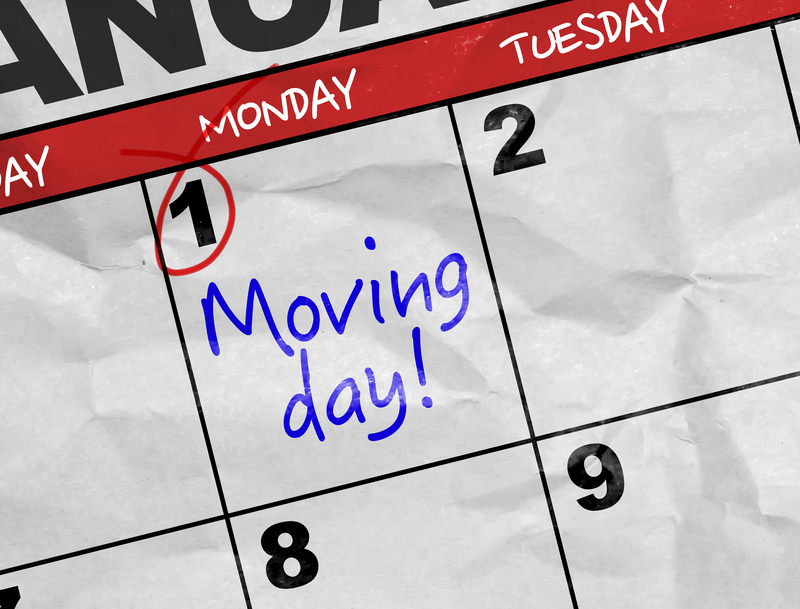Step-by-Step Guide to Stress-Free House Transitions
Posted on 06/06/2025
Step-by-Step Guide to Stress-Free House Transitions
Moving to a new house is an exciting experience, but it can also come with its share of stress and challenges. Whether you're relocating across town or to a new city, a well-organized approach can make your house transition smooth, efficient, and hassle-free. In this comprehensive guide, we'll walk you through each stage of the process, providing expert tips and practical strategies for achieving a stress-free house transition.

The Importance of Stress-Free House Moves
It's no secret that moving homes ranks among the most stressful life events, alongside changes in employment and relationship status. However, a smooth house transition is not just about physical relocation; it's about safeguarding your mental well-being, preserving family harmony, and ensuring a fresh start in your new environment. By following a carefully crafted plan, you can minimize disruptions, avoid common pitfalls, and embrace this new chapter of life with confidence and excitement.
Getting Started: Planning for a Seamless House Transition
1. Establish a Realistic Timeline
- Decide on your moving date as early as possible.
- Work backwards from this date to create a moving checklist with key tasks and milestones.
- Allow extra time for unexpected circumstances, such as paperwork delays or bad weather.
Pro tip: Aim to start planning your move at least six to eight weeks in advance for a truly stress-free house move.
2. Set Your Moving Budget
- Account for moving company fees, supplies, cleaning services, and utility transfers.
- Keep a buffer for emergencies or unplanned expenses.
- Research multiple moving service providers for the best price and reliability.
Being financially prepared can significantly reduce last-minute anxiety and ensure a worry-free house shifting experience.
Declutter and Organize: The Key to a Hassle-Free Move
3. Conduct a Home Inventory
- Go through each room to list all items.
- Highlight items you no longer use or want.
- Separate possessions into four categories: Keep, Donate, Sell, Dispose.
Decluttering before the move not only lightens your load but also lowers transportation costs and ensures you start fresh in your new space.
4. Purge, Donate, and Sell
- Host a garage sale or use online platforms to sell unwanted valuables.
- Donate usable clothing, books, and household goods to local charities.
- Dispose of or recycle broken or outworn items responsibly.
Eliminating excess belongs is a top tip for a stress-free housing transition.
Packing Smart: Strategies for a Smooth Transition
5. Gather Quality Packing Supplies
- Secure sturdy boxes in various sizes, packing tape, bubble wrap, and markers.
- Use specialized containers for dishes, fragile items, and electronics.
- Label each box with its contents and destination room.
6. Pack Methodically
- Start with rarely used items such as out-of-season clothes, guest linens, or decor.
- Pack room by room to avoid confusion during unpacking.
- Fill boxes completely, using soft items as padding to prevent shifting.
Labeling boxes clearly is essential for an organized unpacking experience and ensures a seamless house relocation.
7. Keep Essentials Separate
- Pack a "first night box" with toiletries, bedding, a change of clothes, basic kitchenware, and important documents.
- Include medications, children's comfort items, and pet supplies if needed.
- Keep valuables and sensitive documents with you at all times during the move.
Focusing on Paperwork and Administration
8. Change Your Address
- Notify post offices, banks, insurers, subscription services, and your employer about your new address.
- Update address information online wherever possible.
9. Transfer Utilities and Services
- Schedule disconnection at your old home and timely connection at the new place for electricity, gas, water, and internet.
- Inform utility companies of your move date well in advance to avoid service interruptions.
Staying organized with administrative tasks is vital for a stress-free home move and helps prevent post-move headaches.
Moving Day Tips for a Smooth House Transition
10. Confirm Arrangements with Movers
- Double-check the arrival time and contact number of your moving company or helpers a day before the move.
- Ensure all packed boxes are securely sealed and labeled.
- Prepare payment, tips, and any special instructions for movers.
11. Prepare Your Old Home for Departure
- Conduct a final walkthrough to ensure nothing is left behind.
- Take photos of the cleaned, empty rooms as proof for landlords, if applicable.
- Leave keys, garage openers, and any instruction manuals for the new occupants.
12. Plan for Moving with Children and Pets
- Arrange a babysitter or pet-sitter if possible.
- Pack snacks, games, and comfort items to keep children occupied.
- Transport pets in a familiar crate and keep them away from moving chaos.
Ensuring the comfort and safety of your family members is crucial for a hassle-free house transition.
Settling In: Unpacking and Adjusting to Your New Home
13. Unpack Systematically
- Begin with essential rooms such as the kitchen and bedrooms.
- Refer to your labeled boxes for efficient unpacking.
- Tackle one room at a time to stay organized and avoid overwhelm.
14. Familiarize Yourself with the New Space
- Check the functioning of all appliances, lights, locks, smoke detectors, and security systems.
- Locate the circuit breaker, water shut-off valve, and emergency exits.
- Meet your neighbors and acquaint yourself with the neighborhood layout.
15. Personalize and Settle In
- Arrange furniture and decor to create a comfortable, homely environment.
- Hang curtains and set up your bed for restful first nights.
- Explore local amenities, grocery stores, and recreational facilities.
Taking time to settle in step by step builds positive energy and makes your new house feel like home faster!
Self-Care and Emotional Well-being During House Moves
16. Manage Your Stress Proactively
- Prioritize rest by getting enough sleep during the transition period.
- Take breaks, hydrate, and refuel with healthy snacks.
- Ask for help from friends, family, or professional movers when you feel overwhelmed.
17. Maintain Social Connections
- Plan small get-togethers to say goodbye to old neighbors and family members nearby.
- Stay in touch through calls or messages after the move to share updates and keep bonds strong.
18. Keep a Positive Attitude
- View the moving process as an opportunity for growth and new adventures.
- Be patient as you adjust; it's normal for the new house to feel unfamiliar at first.
- Celebrate small milestones, such as your first meal or night in the new place.
The psychological aspects of stress-free house transitions are just as important as the physical steps, ensuring a happy and fulfilling move.
Common Pitfalls to Avoid for a Stress-Free Relocation
19. Avoid Last-Minute Packing
Packing at the last minute causes unnecessary stress and increases the risk of broken or misplaced items. Organize and pack in stages, using a checklist for guidance.
20. Don't Overlook Important Details
Forgetting small things like forwarding mail, arranging transport for pets, or collecting spare keys can delay your move-in process. Use written reminders and delegate smaller tasks when possible.
21. Don't Underestimate Emotional Impact
It's okay to feel sentimental or even a little lost during this period. Recognize and honor your emotions for a truly stress-less house transition.

Frequently Asked Questions About Stress-Free House Transitions
Q1: What is the best way to plan a stress-free move?
Start with a detailed moving checklist, organize your belongings, and give yourself plenty of time. Hiring reliable professionals and involving family members can lighten the load.
Q2: Should I hire professional movers or move myself?
Professional movers offer expertise and physical assistance for complex or long-distance relocations. For short moves, a DIY approach with friends may suffice--just ensure you have adequate help and equipment for a smooth house transition.
Q3: How can I keep my family calm during a move?
Communicate openly about the process, involve everyone in small decisions, retain routines, and plan enjoyable activities for children to help them adjust positively.
Conclusion: Embrace Your New Chapter with Confidence
Relocating doesn't have to be synonymous with chaos or stress. With careful preparation, systematic organization, and attention to both practical and emotional needs, a stress-free house transition is absolutely achievable. Follow this step-by-step guide for a smooth, positive moving experience. Here's to a happy start in your new home and many wonderful memories ahead!
- Establish a clear moving plan and budget early on
- Declutter for a lighter and more cost-effective move
- Pack methodically and label everything
- Stay on top of paperwork and utility transfers
- Don't forget self-care and emotional well-being
For more resources on stress-free home moves and efficient relocation tips, explore our other moving guides and expert articles!









